

 Christmas comes just after August. That is at least what we sometimes think. September and October is our most busy travel season so at the end of August we can look forward to a busy period. Next time we sit down and relax is around Christmas time.
Christmas comes just after August. That is at least what we sometimes think. September and October is our most busy travel season so at the end of August we can look forward to a busy period. Next time we sit down and relax is around Christmas time.
Over the last two months we have been in many different wine regions and wine countries, visiting wineries, tasting wines, talking to winemakers: the Loire Valley, the Rhone Valley, Piedmont, Apulia, Rioja, Alentejo, the Douro Valley, Champagne and others.
Britt’s birthday anniversary is early October and Per’s is early in September. But since it is not very fun to celebrate birthday alone we decided to micro-manage the calendar and to celebrate Per’s in late August and Britt’s has been postponed until mid-November. It was the only possibility if we wanted a week-end when we were both at home.
This has, on the other hand, given us a very good view of what the autumn weather and the harvest looks like. Much better than reading the press releases from the wine marketing boards or other more or less well-informed second hand reports in the press. You will find a short summary of that in the Brief. Most of Europe seems to be agreeing that it has been a difficult and challenging year. The jury is out and will not return until the wine is finished.
All this travelling has meant that we have not had much time to write much these last two months. So you will have to be content with a shortish Brief this month.
On the other hand, it has also meant that we have had the occasion to meet with many of our readers in real life, on our wine tours or at the Digital Wine Communications Conference (#DWCC) that recently took place in Rioja. (And where Per also was one of the speakers, talking about who are the wine communicators in 2013.)
Which brings us back to more wine travel: Do take a look at our wine travel programs, the scheduled tours or the custom made ones. It would be a great pleasure to meet you on one of these. For example:
- Chile and Argentina wine tour in February
- South Africa wine tour in March
- Douro Valley wine tour in Portugal in May
More info on all of that in the Brief and on our travel site BKWineTours.com.
Hope to see you sometime soon!
Oh, and also: please visit our Facebook pages and “like” them! BKWine Wine Tours Facebook page, and also the editorial BKWine Magazine Facebook page.
Britt & Per
PS: Recommend to your friends to read the Brief!
– – – – – –
What’s on at BKWine Tours
- South America: Chile and Argentina, 1-16 February 2014
- South Africa, 28 February – 10 March 2014
- Douro Valley, Portugal, 14-18 May 2014
For more information please contact us on email or on phone (we’re on French time), or go to our wine travel site on www.bkwinetours.com!
We also make custom designed wine tours – on-demand tours for you and a group of friends, for your company (maybe to scout new winegrowers?), for a special event… We can combine winery visits and wine touring with other activities: gastronomic workshops, visit to an oyster farm, truffles hunting, cheese making, and more. More info on the custom designed and bespoke BKWine wine tours and travel here!
Wine tours in Finnish: We also do wine tours in Finnish. And in German, Norwegian, Spanish…
Do you want the latest news and updates on our wine travel activity? Subscribe here! (Second alternative BKWineTours.com)
From the World of Wine
The harvest around Europe in 2013
France: After a cold and rainy spring and early summer the heat and the sun finally come to France in July and August. And in many places the warm weather stayed on in September. But not everywhere, and the results have been mixed.
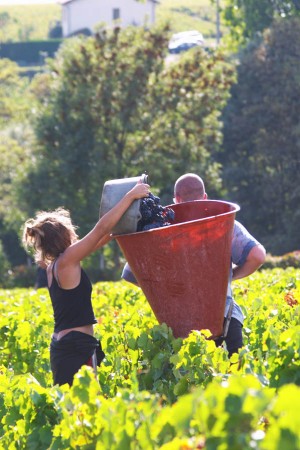 Overall, the harvest has been late in Europe. When we were in Champagne around September 20 the producers were very happy with the grapes. Both the quality and quantity were good. All that was needed was higher sugar levels and good weather for another 10 days. And they were quite lucky. Bordeaux has had a difficult season with late maturity, low yields and problems with grey rot. During harvest it was important to work hard at the sorting table and not be afraid to discard bad grapes.
Overall, the harvest has been late in Europe. When we were in Champagne around September 20 the producers were very happy with the grapes. Both the quality and quantity were good. All that was needed was higher sugar levels and good weather for another 10 days. And they were quite lucky. Bordeaux has had a difficult season with late maturity, low yields and problems with grey rot. During harvest it was important to work hard at the sorting table and not be afraid to discard bad grapes.
Germany: The Mosel Valley in Germany has received its fair share of varied summer weather but a very fine autumn finally gave high sugar levels in the Riesling grapes.
Portugal: Portugal had some early rains this year which is not common. In the Douro Valley is usually does not the rain until November but this year many producers had to interrupt the picking because of the rain. The harvest was not completed until around October 25 but the result is quite good.
Italy: It has been a strange year in Italy. A long and cold spring with rain, up until mid-June. Then a short and very hot summer. Autumn has been cool with a lot of showers. Many producers have rushed in the grapes to avoid the rain. Nevertheless most winemakers seem content with the grape quality in the tanks.
Spain (mainly Rioja): A cold and difficult spring led to a late and uneven flowering (as in many places in Europe). Summer was good but autumn arrived with changing weather and some rain. A very late harvest, three sometimes four weeks that was sometimes affected by rot. A difficult year with perhaps varied result.
But as always, it is difficult to predict what the wine will be like until you have it finished fermenting.
Join us at BKWine on a spectacular tour of Chile and Argentina in South America
If you have never been to Chile and Argentina then you have a great experience to look forward too. It is two neighbouring countries that although they have a long common border are very different. Both are full of exciting experiences.
We have put together a big tour that will show you the best that these two countries can offer in wine and food, but that will also give you plenty of opportunities to enjoy the culture, the landscape and the people. The tour will take you to some of the top wineries in Mendoza in Argentina and in the wine regions of Chile. Thanks to our unique contacts in the wine world we have been able to put together a very special program for you.
We also bring you to an estancia on the Pampas, with sun, horses and a lovely pool, tango in Buenos Aires, the breath-taking alleys of Valparaiso, and, not least, a spectacular road journey over the Andes’ mountains. It is high time to book this tour for February 2014. Read more and book this wine and food tour to Chile and Argentina now! On our wine travel site BKWineTours.com.
Travel with the experts on wine and the specialist on wine tours!
Stolen fruit is sweeter? Theft of Sauternes grapes
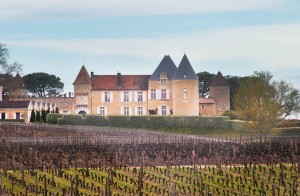 We have been asked this question several times: does it happen that wine growers get their grapes stolen before harvest? The vineyards are after all rather unprotected. We usually say that this is not a big problem. But apparently thefts do happen. Recently, someone did a clandestine midnight harvest at Château Suau, a grand cru classé-château in Sauternes. They took grapes from about 15 rows of vines. This represents approximately 15 hectolitres of wine and in money in means that the chateau was robbed of around 15,000 euros.
We have been asked this question several times: does it happen that wine growers get their grapes stolen before harvest? The vineyards are after all rather unprotected. We usually say that this is not a big problem. But apparently thefts do happen. Recently, someone did a clandestine midnight harvest at Château Suau, a grand cru classé-château in Sauternes. They took grapes from about 15 rows of vines. This represents approximately 15 hectolitres of wine and in money in means that the chateau was robbed of around 15,000 euros.
The owner Corinne Biarnès thinks this was the work of another producer who needed some more grapes for his own wine. It is hard to believe but how else what do it? Read more on sudouest.fr
Initiale from Champagne Jacques Selosse | Britt’s Wine of the Month
The current Selosse is named Anselme. It was his father, Jacques, who founded the estate in Avize in 1949. Anselme took over in 1974. The vineyards are mainly located in the Côte des Blancs, but he also has a bit of Pinot Noir in Aÿ and in Ambonnay. His Champagnes are among the most prominent today. They have a rare concentration and complexity. The harvest is late to get a higher sugar levels and yields are lower than for most champagnes. The cellar is full of oak barrels of various sizes. Here the wine spends a year before being bottled. During the long time the champagne then spends in bottle the lees adds fullness and character.
Initiale costs around 60 euros on the property. But it is usually sold out because there is an incredible demand for the around 50,000 bottles produced here. With its deep, rich flavour and full bodied character Initiale is more a high-class wine than a champagne. Or maybe a perfect combination of both.
Join us at BKWine on a wine tour to South Africa this winter, an exciting ”New World” wine country
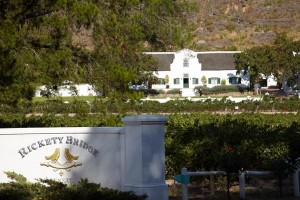 South Africa has become one of the leading New World wine producing countries. But it is not really “New”. They recently celebrated 350 years of winemaking in South Africa. It is a wine country full of things to discover. Our travel program takes you to some of the best wine producers in South Africa, in Stellenbosch, Franschhoek, Swartland etc. You can find many famous wine producers here but that sometimes focus more on volume than on quality. Therefore, in our program some of the most well-known names are “missing”. Instead we will take you to those winemakers that are shaping the next wave of quality wines in South Africa. Often smaller, not yet well-known.
South Africa has become one of the leading New World wine producing countries. But it is not really “New”. They recently celebrated 350 years of winemaking in South Africa. It is a wine country full of things to discover. Our travel program takes you to some of the best wine producers in South Africa, in Stellenbosch, Franschhoek, Swartland etc. You can find many famous wine producers here but that sometimes focus more on volume than on quality. Therefore, in our program some of the most well-known names are “missing”. Instead we will take you to those winemakers that are shaping the next wave of quality wines in South Africa. Often smaller, not yet well-known.
You will meet the winemakers and the families behind the wines. But not only that. You will discover Cape Town with all its sights, the Cape of Good Hope, top-class South African gastronomy, wild scenery and nature, time for a lazy dip in the pool, and an opportunity to take part in a two day luxury safari for those who so wish. Read more on this exceptional wine and food tour to South Africa in March 2014 and book now! On our wine travel site BKWineTours.com.
Travel with the experts on wine and the specialist on wine tours!
Try a different German wine: delicious wines from unusual grapes
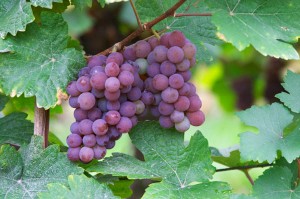 Yes, riesling is delicious but there are many other exciting wines in Germany too. If you venture a little bit off the beaten tracks of the known grapes you can find many other excellent wines at great prices. Silvaner, weissburgunder (pinot blanc), grauburgunder (pinot gris) and spätburgunder (pinot noir) are just a few examples.
Yes, riesling is delicious but there are many other exciting wines in Germany too. If you venture a little bit off the beaten tracks of the known grapes you can find many other excellent wines at great prices. Silvaner, weissburgunder (pinot blanc), grauburgunder (pinot gris) and spätburgunder (pinot noir) are just a few examples.
We have made a selection and give you our recommendations of some of the best wines from Germany, in a recent tasting, made from these “unusual” grape varieties. Carl-Erik Kanne, one of our reporters in Stockholm, gives you top pick of wines from a tasting arranged by the German Wine Institute on BKWine Magazine: The other Germany: great wines from unusual German grapes.
Sugar or grape must? Yes? No? Maybe?
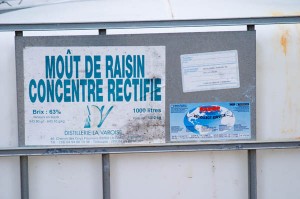 The discussion concerning who is allowed to chaptalize and who instead must use concentrated grape must to enrich their wine has been going on in France all year. To chaptalize means adding regular sugar to the must. But whether adding sugar or concentrated grape must, the result is the same. It raises the sugar level and hence the alcohol content of the wine.
The discussion concerning who is allowed to chaptalize and who instead must use concentrated grape must to enrich their wine has been going on in France all year. To chaptalize means adding regular sugar to the must. But whether adding sugar or concentrated grape must, the result is the same. It raises the sugar level and hence the alcohol content of the wine.
Traditionally wine growers in northern France have chaptalized and growers in southern France have enriched with concentrated grape must. But because the authorities have now removed subsidies for concentrated grape must there are many more who wants to chaptalize. As it is much cheaper to buy sugar. Producers in some parts of southern France received permission to chaptalize this year and others did not. Which has made a lot of people upset. An expert group has now been appointed to study the matter before the harvest in 2014. We had hoped that this fuss would have made producers abandon enrichment all together. There is a demand for wines with lower alcohol content. So why not let nature decide the alcohol level? Read more on vitisphere.com.
Moët & Chandon to launch Indian bubbles
Champagne house Moët & Chandon has launched two Indian sparkling wines, Chandon Brut and Chandon Brut Rosé. They are made in Dindori which is located in Nashik, one of India’s most promising wine growing regions. Nashik is located about three hours’ drive from Mumbai. Here we also well-known Sula Vineyards along with 40 other wine estates. The first grapes here were sauvignon blanc and chenin blanc and they were planted in 1990.
Chandon’s two sparkling wines are made using the traditional method, which is a secondary fermentation in the bottle. Chandon Brut is a blend of chenin blanc, chardonnay and pinot noir. The rosé has shiraz as the dominant grape. It is mixed with a little pinot noir. These wines are made primarily for the Indian market. Read more on thedrinksbusiness.com
Corked wine? Not only cork defects
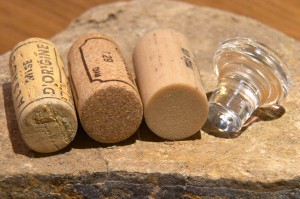 When you talk about faulty wines, the cork is often the scapegoat. However, there are other types of defects. A tasting in the region of Touraine in the Loire Valley shows that the cork defect is not the biggest problem.
When you talk about faulty wines, the cork is often the scapegoat. However, there are other types of defects. A tasting in the region of Touraine in the Loire Valley shows that the cork defect is not the biggest problem.
The tasting was conducted by the Inter Loire in September when a large number of wines from different appellations of Touraine and vintages from 2009 to 2012 were tasted. 4 different types of defects were identified: Cork, technical problems in the wine cellar, microbiological problems and oxidation.
12% of the defective wines were corked. 2% of the defective wines had too much sulphur or tasted rotten or green because of the poor quality of the grapes. 13% were reduced. 8% tasted rotten or mouldy because of microbiological problems. But it was oxidation that was the big “winner”. 50% of the defective wines were perceived as oxidized. But we would argue that oxidation is not always bad. How you perceive oxidation is very personal. Some people perceive it as a defect, other as a nice sign of maturity that adds complexity to the wine. So it is not always a “defect” in the usual sense of the word. Read more on mon-viti.com
The root cause? Expensive French rootstocks
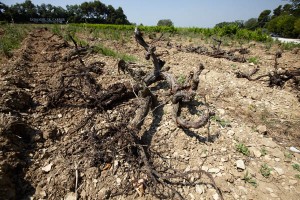 France has many nurseries that provide winegrowers with new vines. These nurseries is now worried that the French vines have become too expensive compared to other European countries. They keep losing market shares. Exports have declined over the past five years. France exported last year 14 million vines. At the same time 12 million were imported.
France has many nurseries that provide winegrowers with new vines. These nurseries is now worried that the French vines have become too expensive compared to other European countries. They keep losing market shares. Exports have declined over the past five years. France exported last year 14 million vines. At the same time 12 million were imported.
The French nurseries complain about expensive social fees compared to other European countries and that the French regulations regarding the sanitary standards of the vines are more stringent than the EU standards that other countries use. Read more on mon-viti.com
Join us at BKWine on a spectacular wine tour to the Douro Valley in Portugal
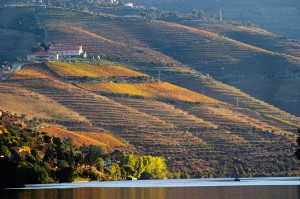 The Douro Valley is one of the world’s most spectacular wine rivers. It flows slowly down from the inland mountains, winding its way between incredibly steep slopes, slopes that are covered from the water’s edge to the top with vineyards. It is an unlikely place to grow vines. If the landscape is stunningly beautiful, the wines can be equally good. The main production is of course the famous port wine. But on this tour we will also show you the outstanding “table” wines that are made here. We know many of the winemakers personally and can therefore put together a wine tour program that is exceptional and that shows you some of the best there is in this wine region.
The Douro Valley is one of the world’s most spectacular wine rivers. It flows slowly down from the inland mountains, winding its way between incredibly steep slopes, slopes that are covered from the water’s edge to the top with vineyards. It is an unlikely place to grow vines. If the landscape is stunningly beautiful, the wines can be equally good. The main production is of course the famous port wine. But on this tour we will also show you the outstanding “table” wines that are made here. We know many of the winemakers personally and can therefore put together a wine tour program that is exceptional and that shows you some of the best there is in this wine region.
The tour is over four nights. It starts and ends in Porto, a charming old town worth discovering in itself. The rest of the time is spent in the wine region, base in a charming small hotel in the middle of the vineyards. Read more on this wine and food tour to the Douro Valley wine region and book now! On our wine travel site BKWineTours.com.
Travel with the experts on wine and the wine tour specialist!
Which vine rootstock do you choose for your vineyard plantings?
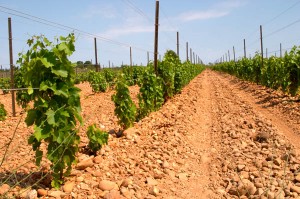 Almost all vines planted today are grafted onto an American rootstock. This is because the wine louse, the phylloxera, is still present in the soil. The American vine is immune to phylloxera, but not the European one. The wine grower can choose from different rootstocks, depending on the soil type and grape. But in fact, most people choose the same. In France, 72 % of the growers use only five different varieties, although there are over 30 different ones to choose from.
Almost all vines planted today are grafted onto an American rootstock. This is because the wine louse, the phylloxera, is still present in the soil. The American vine is immune to phylloxera, but not the European one. The wine grower can choose from different rootstocks, depending on the soil type and grape. But in fact, most people choose the same. In France, 72 % of the growers use only five different varieties, although there are over 30 different ones to choose from.
The most common is called SO 4 and has nearly a quarter of the market. The biggest four after SO 4 is 110 Richter, 3309 Couderc, 41B MGT and Ruggeri. SO 4, actually Sélection Oppenheim 4, comes from a cross between Vitis berlandieri and Vitis riparia. Read more on mon-viti.com
A small moral story on being a wine and food writer
Writing about wine, food and travel have many fun sides. Almost only fun sides. That is why we do it. But sometimes you encounter adventures that are a little bit less fun.
Most people, almost all, that you meet in this “industry” are fantastic persons, kind, exciting and friendly. That is perhaps one of the best reasons to work with wine and food. But sometimes things go wrong.
Some time ago we were contacted for an assignment that sounded very interesting, to make two features on two legendary chefs in Paris. The articles were to be published in the very luxurious trade publication Chef Magazine, published and edited by Peter Marshall. Little did we suspect what adventure it would turn into.
Read about this, and about the importance of knowing who you are dealing and contracting with, on BKWine Magazine: The (financial) dangers of being a wine & food journalist / photographer, working for Peter Marshall / Chef Magazine.
Wine events calendar
Send us an email if you have some event you want on the calendar.
Don’t be an egoist! Share with your friends and other wine enthusiasts! Forward the Brief to your friends! Suggest that they sign up for a free subscription !
© Copyright BKWine






